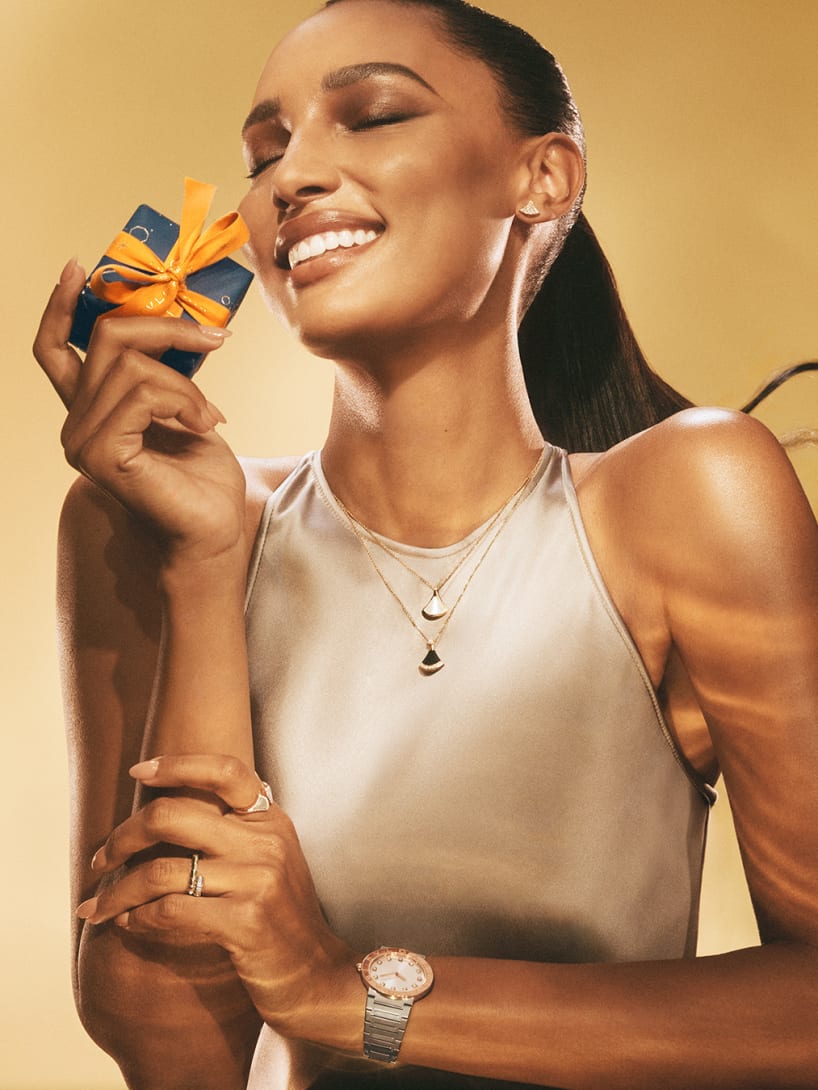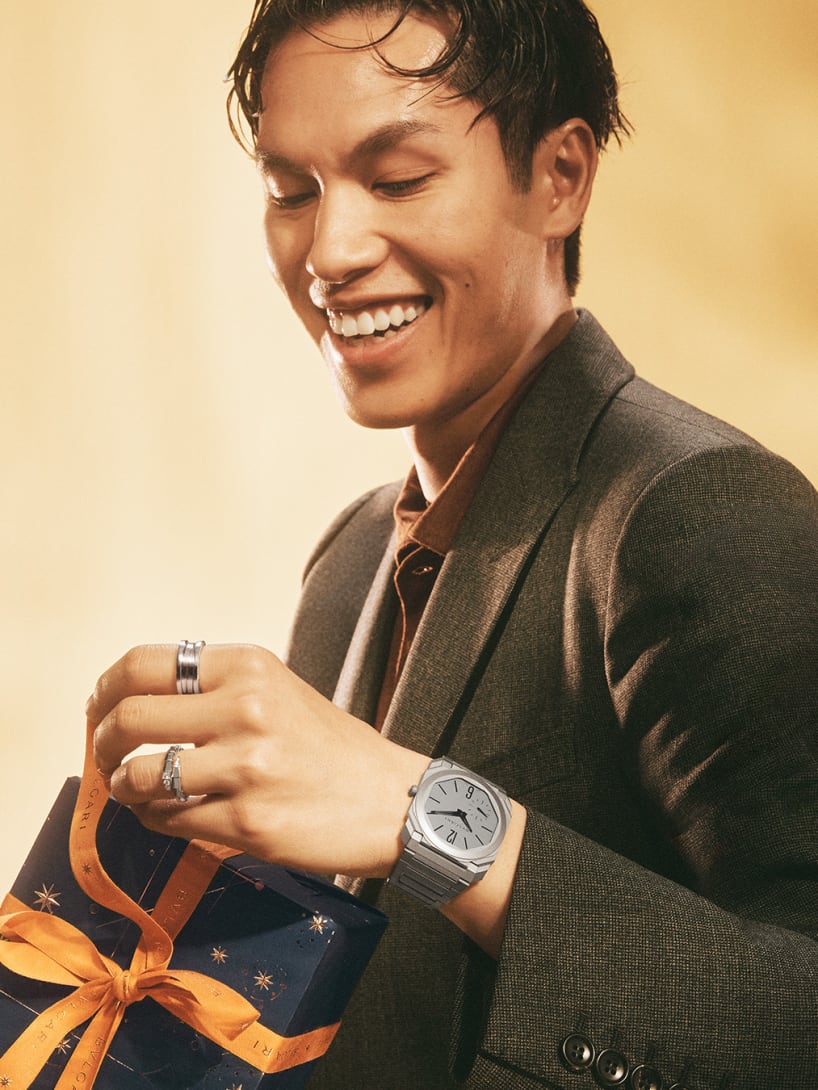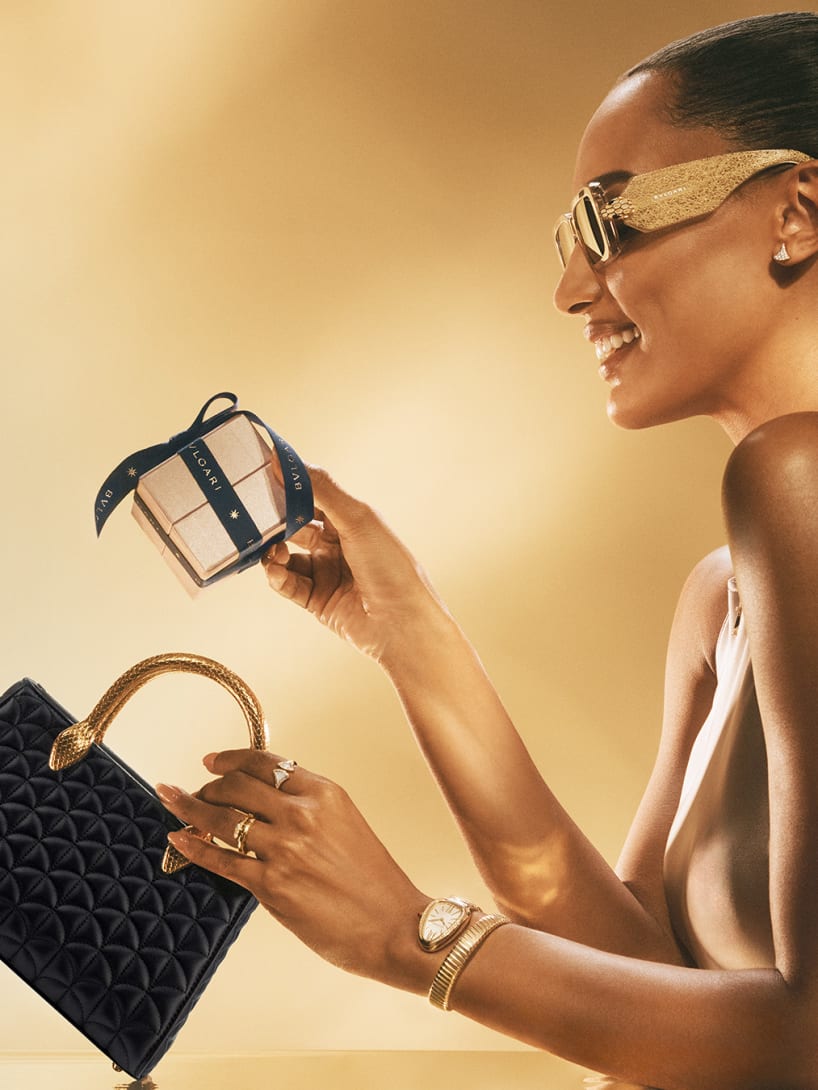
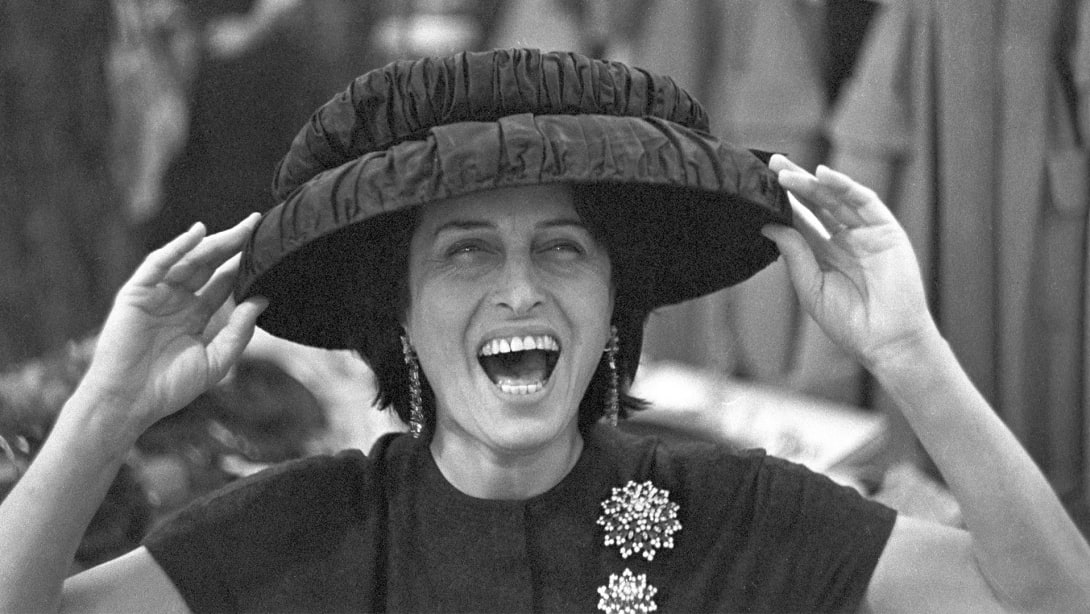

Anna Magnani wears Bvlgari at the Emilio Schubert Atelier, Rome, March 1959. Reporters Associati
1950s: Becoming Bvlgari
Anna Magnani wears Bvlgari at the Emilio Schubert Atelier, Rome, March 1959. Reporters Associati
The 1950s marked a defining era for Bvlgari, building upon the momentum of the 1940s with the launch of the first Serpenti creations. This decade was characterized by the development of Bvlgari's unique Mediterranean style, noted for its striking color combinations and harmonious volumes.
The brand began experimenting with the round contours of the cabochon cut, reminiscent of the cupolas dotted around the Roman skyline; a technique that became a distinctive Bvlgari trait to enhance the vivacity of gem colors.
Midway through the 50s, Bvlgari took another step forward, introducing chromatic combinations of precious and colored stones that were daring for the time.
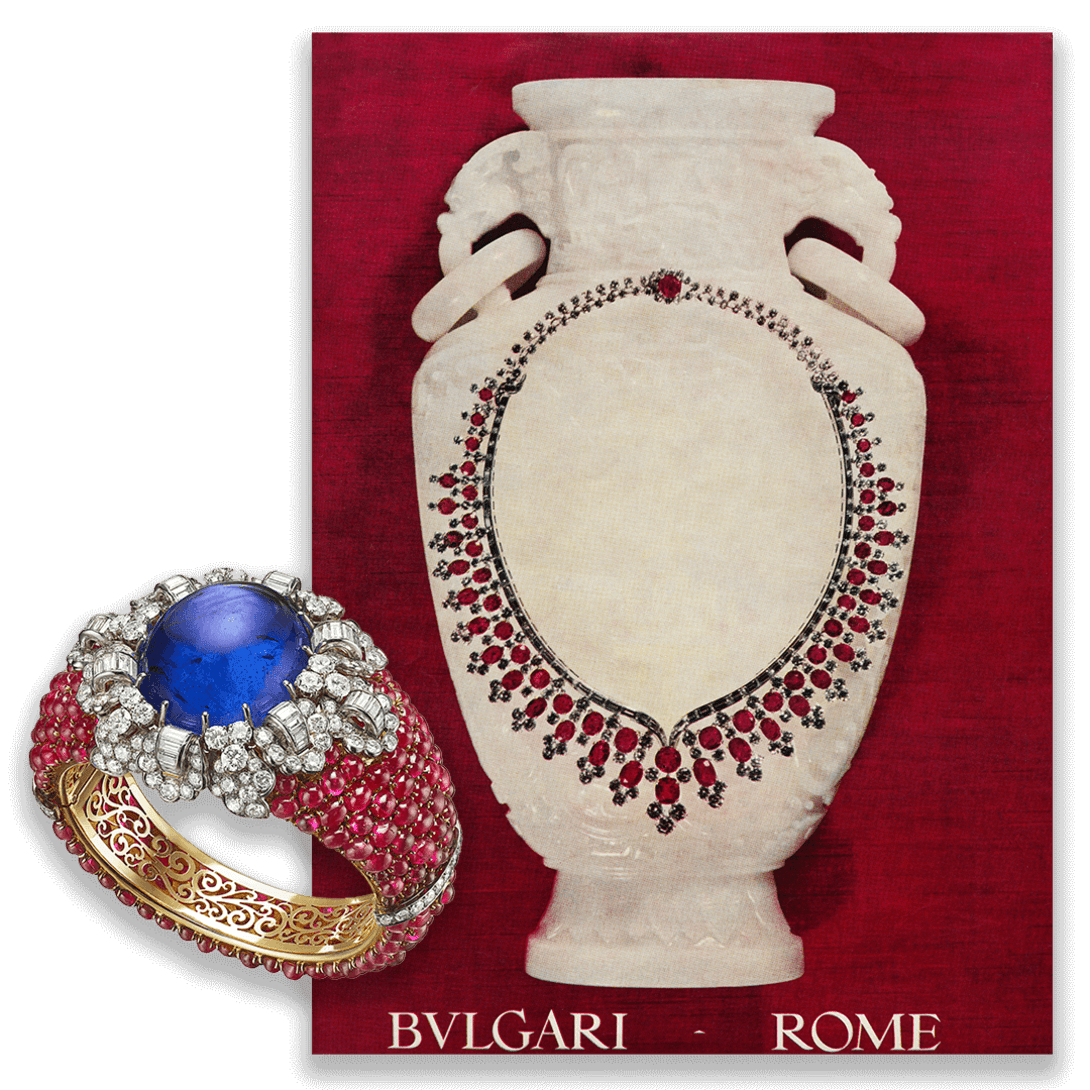


Advertising campaign, 1960-1970. Necklace, 1950s. Bvlgari Historical Archives



Advertising campaign, 1960-1970. Necklace, 1950s. Bvlgari Historical Archives



Gina Lollobrigida with the "David di Donatello" award, 1956. Bvlgari Historical Archives



Gina Lollobrigida with the "David di Donatello" award, 1956. Bvlgari Historical Archives
During this period, Bvlgari's status continued to rise, with Giorgio Bvlgari forging connections with prominent celebrities of the time, including Gina Lollobrigida and Anna Magnani, with the Maison becoming the preferred shopping destination for both the Roman aristocracy and jet-setting personalities visiting the Italian capital.
These relationships not only elevated the brand's standing but also aligned Bvlgari with the glitz and glamour of the era's most iconic figures. The 1950s set the stage for Bvlgari's evolution as a symbol of luxury, style, and artistic innovation in the world of high jewelry.



Paola Senni with Bvlgari vanity case, ca. 1955. Ph. Wanda Gawronska, Vogue US, 1957



Paola Senni with Bvlgari vanity case, ca. 1955. Ph. Wanda Gawronska, Vogue US, 1957

